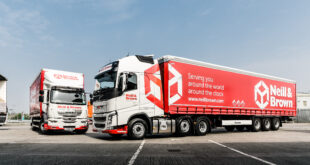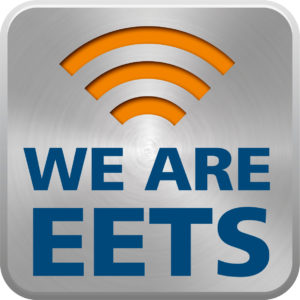2018 is the year of that long-awaited toll box for all Europe. Most service providers are already offering their in-house, interoperable on-board units (EETS-compliant toll boxes fit for use all over Europe), or will introduce them in a few months from now. The box offered by DKV Euro Service, the DKV BOX EUROPE, can be ordered as from May 2018. What to bear in mind when you buy a box, to be sure that you will not be forced to replace your toll boxes once more at a later stage – or to prevent the need for additional toll boxes in spite of everything you did so far? This blog lists the most important selection criteria, and a few nice-to-haves.
The five must-haves:
- Verify if the provider is EETS-certified, or if the box is purchased through a certified EETS-provider. The provider must be able to prove this by way of a certificate.
- The toll box, or OBU, must be equipped with hybrid wireless technology, which implies that the box is able to register and settle both DSRC (Dedicated Short Range Communications) and GNSS (Global Navigation Satellite System) toll systems.
- The box must be equipped with a button for manual setting of the correct axle number. This is because the German and Austrian toll systems, for instance, base their toll tariffs on the number of axles.
- The Italian system requires an additional software module, based on a wireless standard that differs from the one used in other DSRC-countries. So make sure that this module can be added – or is already contained – in your preferred box if you should wish to drive in Italy.
- Is the box ‘plug-and-play’, or does your on-board unit require laborious installing procedures? In other words: is your toll box easily activated and equipped to automatically add (new) countries over-the-air?
The nice-to-haves:
- What reporting and analysis options does the on-board unit provide? Toll boxes collect a treasure-trove of data, admittedly, but only if these data can be made accessible and transparent by way of reports & analytics can they be used for further optimization of business processes.
- Is flexible exchange of toll boxes among various vehicles possible? If so, you will be able to instantly use your OBU for another vehicle and simultaneously dispose of spare toll boxes.
- Are you planning to transfer to another service provider because your current provider does not meet your must-have criteria? Then be sure you opt for a mobility partner who is ‘best-in-class’ in the area of all products and solutions required by haulage and logistics companies. A party not only arranging and settling toll and fuel costs, but also offering additional services like refunding of VAT and diesel duties.
Your choice for that ultimate toll box fit for all Europe is a strategic one. You now have the chance to go for a partner who has a progressive technological vision. After all, the introduction of interoperable toll boxes also means a new step towards the future whereby the role of DKV Euro Service shifts from supplier to mobility director, which ultimately results in a cloud-based mobility management platform; a platform in which both the underlying technology and the data collected through the interoperable OBU will be playing a prominent part.
 DKV BeNeLux You drive, we care
DKV BeNeLux You drive, we care

